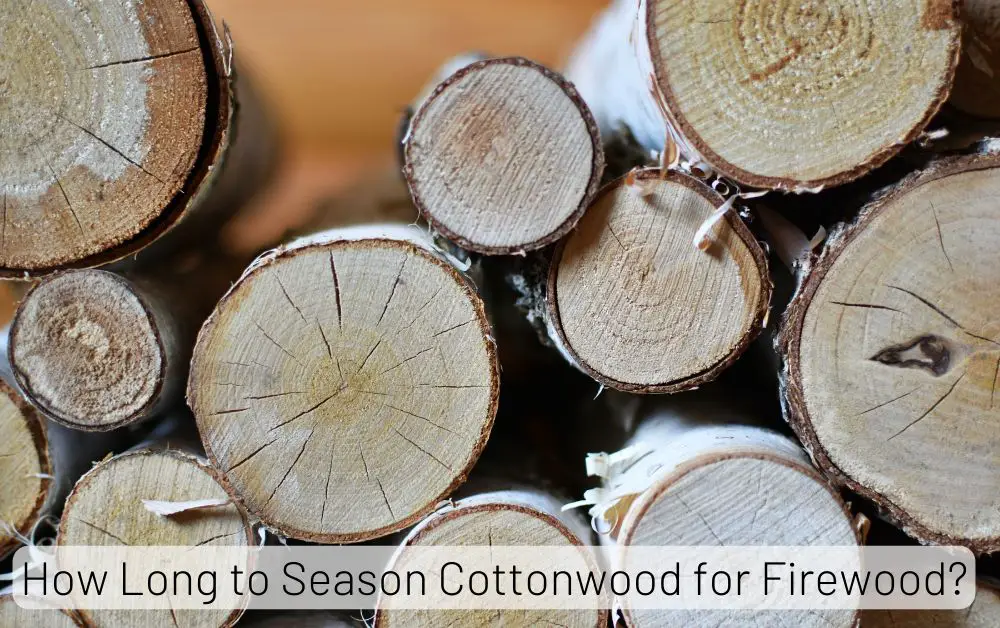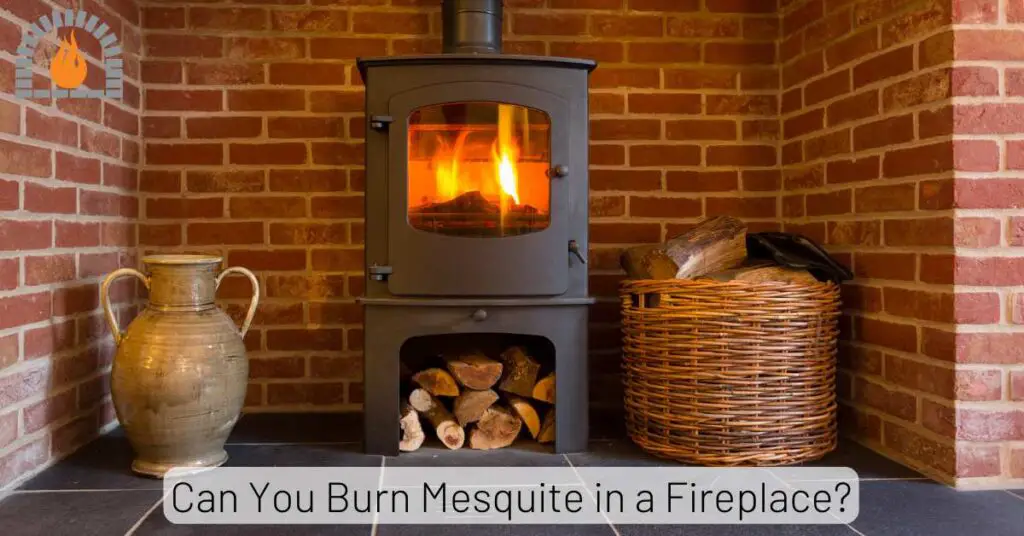In the timeless dance between man and fire, the choice of firewood plays a pivotal role in orchestrating the perfect blaze. Whether you’re a seasoned fire enthusiast or a novice kindling your first flame, understanding the nuances of different types of firewood is vital to a cozy and efficient fire.
Join us on a journey through the crackling world of combustion as we unveil the secrets of the “Best Firewood to Burn Chart.”
From the aromatic allure of cedar to the robust heat of oak, this guide is your compass in navigating the diverse landscape of firewood options, helping you transform chilly nights into warm, inviting moments by the hearth.
Best Firewood To Burn Chart
| Firewood Type | BTU (per cord) | Splitting Ease | Seasoning Time | Smoking Nature | Sparking | Coal Production | Ash Production | Creosote Buildup | Aromatic Properties |
|---|---|---|---|---|---|---|---|---|---|
| Oak | High | Moderate | 1-2 years | Low | Low | High | Moderate | Moderate | Mild |
| Maple | High | Easy | 1-2 years | Low | Low | Moderate | Moderate | Low | Moderate |
| Birch | Moderate | Easy | 6-12 months | Low | Moderate | Moderate | Low | Low | High |
| Pine | Low | Easy | 6-12 months | High | High | Low | High | High | High |
| Hickory | High | Difficult | 1-2 years | Low | Low | High | Moderate | Moderate | High |
| Cherry | Moderate | Easy | 6-12 months | Low | Low | Low | Low | Low | High |
| Apple | High | Moderate | 1-2 years | Low | Low | Moderate | Low | Low | High |
| Mesquite | High | Difficult | 6-12 months | High | High | High | Low | Low | High |
| Juniper | Moderate | Easy | 6-12 months | High | High | Low | High | Low | High |
| Ash | High | Easy | 6-12 months | Low | Low | Moderate | Low | Low | Moderate |
| Walnut | High | Difficult | 1-2 years | Low | Low | Moderate | Low | Low | Moderate |
| Cedar | Low | Easy | 6-12 months | High | High | Low | High | Low | High |
| Redwood | Low | Easy | 6-12 months | Low | Low | Low | High | Low | High |
| Beech | High | Moderate | 1-2 years | Low | Low | Moderate | Moderate | Moderate | Mild |
| Pecan | High | Moderate | 1-2 years | Low | Low | High | Moderate | Moderate | High |
| Sycamore | Moderate | Easy | 6-12 months | Low | Low | Low | Moderate | Moderate | Mild |
| Poplar | Low | Easy | 6-12 months | High | High | Low | High | Low | High |
| Douglas Fir | Moderate | Easy | 6-12 months | Low | Moderate | Low | Moderate | Low | Moderate |
| Elm | Moderate | Moderate | 1-2 years | Low | Low | Moderate | Moderate | Moderate | Mild |
| Eucalyptus | High | Difficult | 6-12 months | Low | High | High | Low | Low | High |
| Black Locust | High | Difficult | 1-2 years | Low | Low | High | Moderate | Low | High |
| Tamarack | High | Difficult | 1-2 years | Low | Low | High | Moderate | Moderate | High |
| Cottonwood | Low | Easy | 6-12 months | High | High | Low | High | Low | High |
| Osage Orange | High | Difficult | 1-2 years | Low | Low | High | Moderate | Moderate | High |
| Red Mulberry | High | Moderate | 1-2 years | Low | Low | Moderate | Moderate | Moderate | High |
| Black Walnut | High | Difficult | 1-2 years | Low | Low | Moderate | Moderate | Moderate | Mild |
| Tamarind | High | Difficult | 1-2 years | Low | Moderate | High | Moderate | Moderate | High |
| Ironwood | High | Difficult | 1-2 years | Low | Low | High | Moderate | Low | High |
| Hackberry | High | Easy | 6-12 months | Low | Low | Moderate | Moderate | Moderate | Mild |
| Black Cherry | Moderate | Easy | 6-12 months | Low | Low | Low | Low | Low | High |
| Red Alder | Moderate | Easy | 6-12 months | Low | Low | Moderate | Moderate | Moderate | Mild |
| Black Birch | Moderate | Easy | 6-12 months | Low | Moderate | Moderate | Low | Low | High |
| Honey Locust | High | Difficult | 1-2 years | Low | Low | High | Moderate | Moderate | High |
| Persimmon | High | Easy | 6-12 months | Low | Low | High | Moderate | Moderate | High |
| Sugar Maple | High | Moderate | 1-2 years | Low | Low | Moderate | Moderate | Low | Moderate |
| Red Oak | High | Moderate | 1-2 years | Low | Low | High | Moderate | Moderate | Mild |
| Yellow Birch | Moderate | Easy | 6-12 months | Low | Moderate | Moderate | Low | Low | High |
| White Pine | Low | Easy | 6-12 months | High | High | Low | High | High | High |
| Shagbark Hickory | High | Difficult | 1-2 years | Low | Low | High | Moderate | Moderate | High |
| Plum | Moderate | Easy | 6-12 months | Low | Low | Low | Low | Low | High |
| Pear | High | Moderate | 1-2 years | Low | Low | Moderate | Low | Low | High |
| Acacia | High | Difficult | 6-12 months | Low | High | High | Low | Low | High |
| Pineapple Guava | Moderate | Easy | 6-12 months | Low | Low | Moderate | Moderate | Low | High |
| Red Mulberry | High | Easy | 6-12 months | Low | Low | High | Moderate | Moderate | High |
| Black Ash | High | Easy | 6-12 months | Low | Low | Moderate | Low | Low | Moderate |
| Cottonwood | Low | Easy | 6-12 months | High | High | Low | High | Low | High |
| Mesquite | High | Difficult | 6-12 months | High | High | High | Low | Low | High |
| Chestnut | High | Difficult | 1-2 years | Low | Low | High | Moderate | Moderate | Mild |
| Black Willow | Low | Easy | 6-12 months | High | High | Low | High | Low | High |
| Olive | High | Moderate | 1-2 years | Low | Low | High | Moderate | Moderate | High |
| Quaking Aspen | Low | Easy | 6-12 months | High | High | Low | High | Low | High |
| Chestnut Oak | High | Moderate | 1-2 years | Low | Low | High | Moderate | Moderate | Mild |
| White Cedar | Low | Easy | 6-12 months | High | High | Low | High | Low | High |
| Red Cedar | Low | Easy | 6-12 months | High | High | Low | High | Low | High |
The best firewood to burn chart above contains 50+ of the most commonly used firewoods, along with their key characteristics. Please note that the table above provides a general overview of each firewood to assist you in making a quick selection.
However, for choosing a suitable firewood, it is advisable to delve deeper into the specific qualities of the wood you have chosen.
How To Choose Best Firewood?
Choosing the best firewood is essential for efficient and clean burning in your fireplace or wood-burning stove. Here are some tips to help you select the right firewood:
- Hardwood vs. Softwood:
- Hardwoods like oak, hickory, maple, and birch are denser and burn longer and hotter than softwoods.
- Softwoods like pine and spruce ignite quickly and produce a lot of flame, but they burn faster and may leave more creosote buildup in your chimney.
- Moisture Content:
- The ideal moisture content for firewood is around 20% or lower. Dry wood burns more efficiently and produces less smoke.
- Use a moisture meter to check the moisture content. Well-seasoned wood makes a distinctive “clink” sound when two pieces are banged together.
- Seasoning:
- Seasoning refers to allowing wood to dry properly after being cut. Freshly cut or green wood contains high moisture and does not burn efficiently.
- Properly seasoned wood can dry for at least 6 months to a year. It should have visible cracks on the ends and sound hollow when tapped.
- Appearance:
- Look for clean wood without mold, fungi, or signs of insect infestation. These can affect the combustion process and indoor air quality.
- Size and Splitting:
- Choose wood that is split into manageable sizes. Smaller pieces ignite more quickly, while larger pieces provide longer-lasting heat.
- Well-split wood also exposes more surface area, aiding in the drying process.
- Local Availability:
- Choose firewood that is readily available in your area. This helps to support sustainability and reduces transportation costs.
- Density:
- Denser woods generally have more energy content and burn longer. Dense hardwoods like oak and hickory are excellent choices.
- Cleanliness:
- Avoid using wood that has been painted, stained, or treated, as the chemicals in these substances can release toxic fumes when burned.
- Storage:
- Once you have selected good firewood, store it in a dry, well-ventilated area. A covered woodshed is ideal to protect it from rain and snow.
- Local Regulations:
- Be aware of local regulations regarding the type of wood you can burn. Some areas have restrictions to protect air quality.
Affiliate Disclosure: Fireplaceadviser.com is a participant in the Amazon Services LLC Associates Program. We may earn a commission when you click on certain links on this site and purchase.

Hello!! I am Jamal Khan. I often fix my home electric heaters and gas stove problems and research the common issues in the heating units to improve my knowledge and expertise. The aim of establishing fireplaceadviser.com is to share my expertise and knowledge with my audience.
















I have burned popular fire wood for years. And have mixed other wood types to reduce the creosote. I have split dried popular. My advice use a spliter. Popular is as hard to split as Maple. Or dried hemlock. My 20 ton splinter comes to a stop, on big knots, but does spilt them too. Don’t waste your time with a splitting maul. And it burns very hot, low ash and long burn time. With a good stove. Try it, it’s cheaper than the most popular fire wood. And better than alder.
Thank you for sharing your experience! It’s great to hear about your success using popular firewood mixed with other types to reduce creosote buildup.